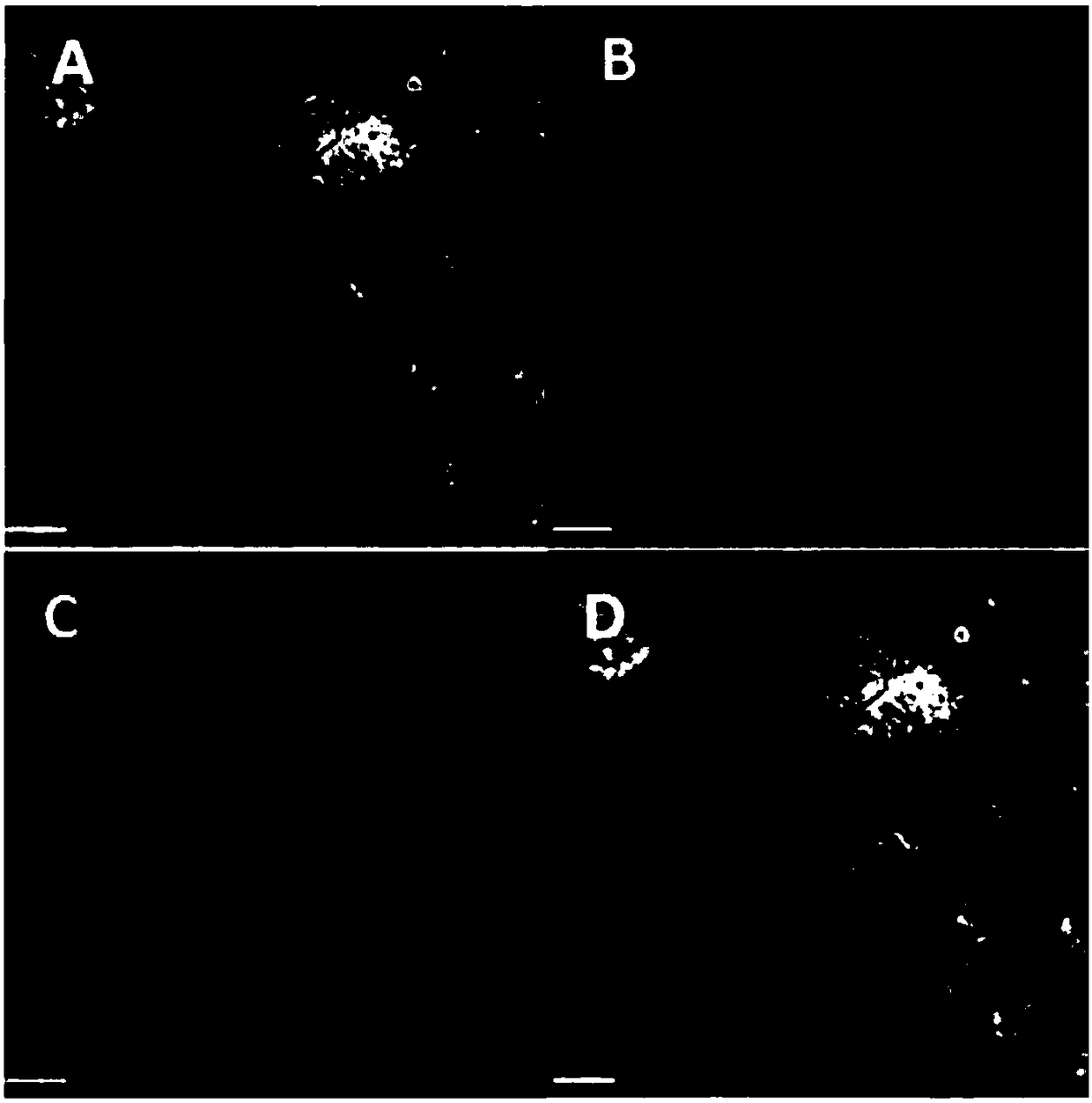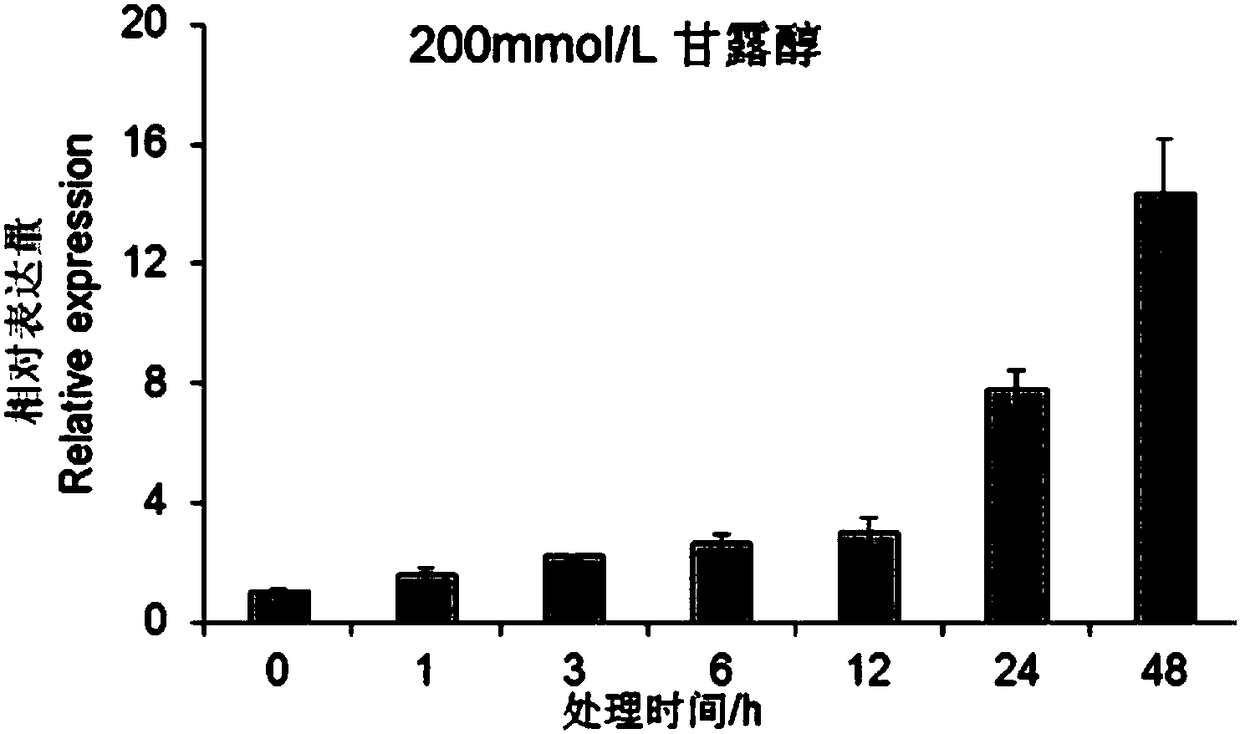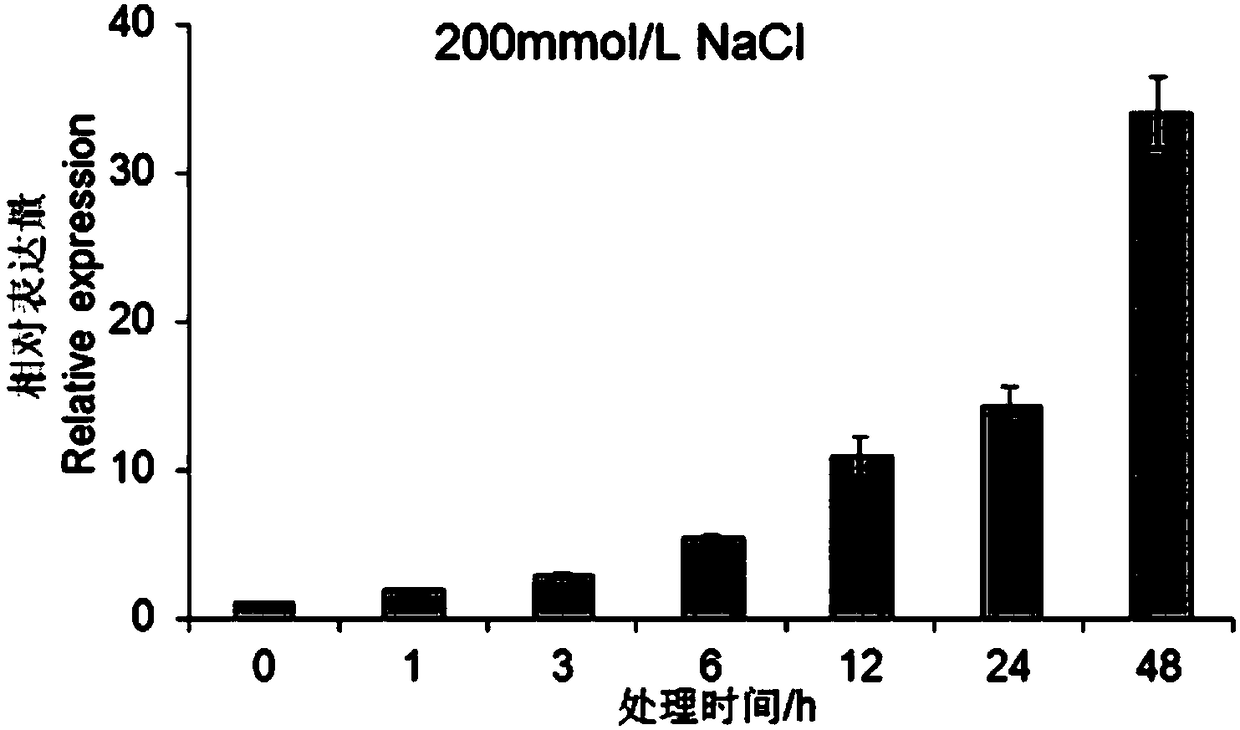Application of pyrus betulaefolia Pb4RMYB gene and encoded protein thereof in enhancement of plant salt tolerance
A gene-encoded, salt-tolerant technology, applied in applications, plant peptides, plant products, etc., can solve problems such as less research on fruit trees, and achieve the effect of improving salt tolerance
- Summary
- Abstract
- Description
- Claims
- Application Information
AI Technical Summary
Problems solved by technology
Method used
Image
Examples
Embodiment 1
[0032] Embodiment 1: Cloning of Du pear Pb4RMYB gene
[0033]The pear seedlings with 6-8 true leaves were used as test materials, the total RNA was extracted and reverse transcribed, and the obtained first-strand cDNA was used to amplify the Pb4RMYB gene. Utilize the improved rapid CTAB method (CTAB extraction buffer includes: 2% CTAB, 2.5% PVP, 100mM Tris-HCl (pH 8.0), 25mM EDTA (pH 8.0), 2M NaCl, 0.05% spermidine, 2% β-mercaptoethanol ) to extract total RNA, take 1 μg RNA sample, incubate with 1 U DNase I (purchased from TaKaRa Company) at 37° C. for 30 min, then add 1 μL EDTA (25 mM) and incubate at 65° C. for 10 min.
[0034] The first strand of cDNA was synthesized using PrimeScript II 1st Strand cDNA Synthesis Kit (TaKaRa code: D6210). The amplification primers were: forward primer Pb4RMYB-F1: 5'-ATGTCTCCTCCCTCCGATGACG-3'; reverse primer Pb4RMYB-R1: 5'-TTAACCACATTGACGCCGCCTCTTCG-3'. 25μL PCR reaction system includes: 1×PCR buffer (purchased from TakaRa company), 2.5mM ...
Embodiment 2
[0038] Example 2: qRT-PCR analysis of Pb4RMYB response to salt stress in Duli pear
[0039] The extraction of pear total RNA, the method for cDNA synthesis are the same as in Example 1. Pear tubulin (AB239681) was used as a control, and the primer sequences were as follows: forward primer TUB-F: 5'-TGGGCTTTGCTCCTCTTAC-3', reverse primer TUB-R: 5'-CCTTCGTGCTCATCTTACC-3'. Use Primer Premier 5.0 to design a gene-specific qRT-PCR primer pair within the open reading frame of the Pb4RMYB gene. The primer sequence is as follows: forward primer Pb4RMYB-F2: 5'-TGTATCTCCCGGGTCGTTCT-3', reverse primer Pb4RMYB-R2: 5' -TTGATACCGTGCCAAGCACT-3'.
[0040] SYBR Green kit (purchased from TaKaRa Company) was used for qRT-PCR. 20 μL PCR amplification system contains: 10 μL 2×SYBR Premix Ex Taq, 0.2 μM upstream and downstream primers and 100 ng template cDNA. 96-well plate (Axygen) and high-transmittance parafilm (Axygen) for qRT-PCR were used, and the fluorescence quantitative PCR instrument i...
Embodiment 3
[0042] Example 3: Subcellular localization of the Pb4RMYB gene
[0043] The subcellular localization of Pb4RMYB gene was studied by tobacco transient expression system, and the expression vector used was pCAMBIA1302, which contained GFP gene. Utilize RT-PCR to amplify the whole ORF of the Pb4RMYB gene, the ORF amplification primers are Pb4RMYB-F1 and Pb4RMYB-R1 in Example 1, and respectively add Add Nco I and Spe I two restriction sites to obtain amplification primers with restriction sites: Forward primer Pb4RMYB-F3: 5'-C CCATGG ATGTCTCCTCCCTCCGATGACG-3', reverse primer Pb4RMYB-R3: 5'-GG ACTAGT TTAACCACATTGACGCCGCCTCTTCG-3'. The underline is the enzyme cutting site, CCATGG is the Nco I restriction site, ACTAGT It is the Spe I restriction site.
[0044] First, the amplified product was connected to the pMD19-T vector to obtain the recombinant vector PMD19-Pb4RMYB. At the same time, pCAMBIA1302 and PMD19-Pb4RMYB were digested with Nco I and Spe I, and the products we...
PUM
| Property | Measurement | Unit |
|---|---|---|
| Molecular weight | aaaaa | aaaaa |
Abstract
Description
Claims
Application Information
 Login to View More
Login to View More - R&D
- Intellectual Property
- Life Sciences
- Materials
- Tech Scout
- Unparalleled Data Quality
- Higher Quality Content
- 60% Fewer Hallucinations
Browse by: Latest US Patents, China's latest patents, Technical Efficacy Thesaurus, Application Domain, Technology Topic, Popular Technical Reports.
© 2025 PatSnap. All rights reserved.Legal|Privacy policy|Modern Slavery Act Transparency Statement|Sitemap|About US| Contact US: help@patsnap.com



